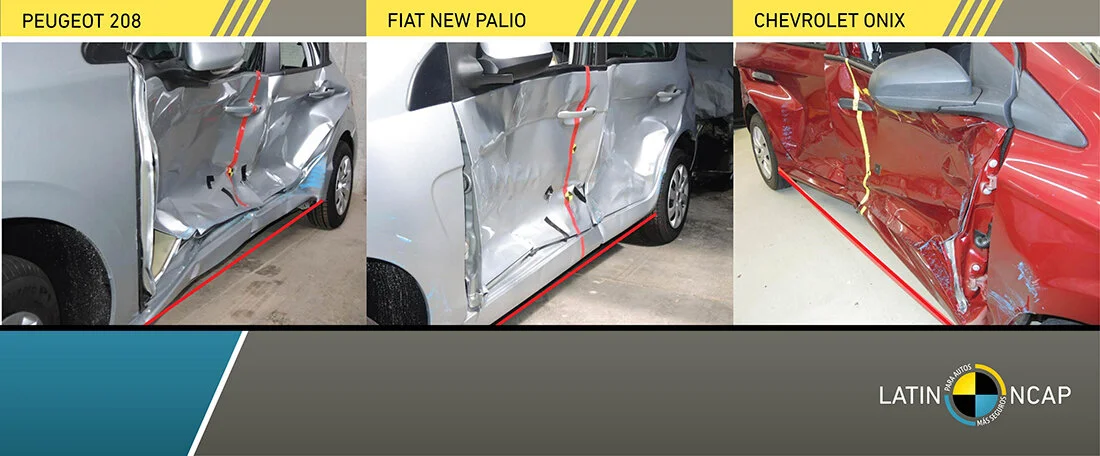Chevrolet Onix’s Side Impact Protection Is Worse Than Its Competitors
Latin NCAP released today the result of the Chevrolet Onix under Latin NCAP 2016 protocol. The Onix, best-selling car in Brazil, achieved a disappointing zero stars for adult occupant protection and three stars for child occupant protection.
As from 2016 Latin NCAP has included a side impact test as part of it protocols and has begun testing some popular models, already tested for frontal impact as from 2014. So far Latin NCAP conducted the side impact of the Fiat Palio, the Peugeot 208, and now the Chevrolet Onix. In the test Latin NCAP conducted the analysis of the dummy’s data for all three models. The Onix was the only one to record values that exceed the allowed biomechanical limits to the chest during the crash test.
In regards to the crashworthiness of the structures of the three models, the Fiat Palio has the best structural performance in side impact, followed by the Peugeot 208, which does not have side door bars that are standard in versions in Europe. Both could have performed better with side airbags. However in the case of the Onix, the structural performance in the side impact protection showed a very high displacement (penetration) of the B-pillar into the passengers’ compartment, significantly higher than for the other two cars. It is likely that even the addition of side airbags may not help with such a poor structural performance. Furthermore the rear door of the Onix opened during the test. Door opening means a high risk for the child occupants in this case and that the model would have failed the UN basic side impact protection regulation (UN95).
Alejandro Furas Latin NCAP’s Secretary General said:
“Latin NCAP is very disappointed with the Onix result. General Motors claim that the Onix is based on a global platform. However, the version tested by Latin NCAP would not pass either the UN regulation (UN95) or the US Federal Motor Vehicle Safety Standard (FMVSS 214) that are applied in Europe and the USA respectively. Why should GM be allowed to offer such a sub-standard car for sale in Latin America? It shows clearly why side impact regulation is urgently needed to stop this unacceptable double standard”.
About Latin NCAP
The Latin New Car Assessment Programme, Latin NCAP, was launched in 2010 to develop a regional system of independent crashworthiness and safety rating across Latin America and Caribbean (LAC). Latin NCAP replicates similar consumer testing programmes developed over the last thirty years in North America, Europe, Asia and Australia, and which have proved to be very effective in improving the safety of motor vehicles. Since 2010 Latin NCAP has published the results of more than eighty cars in eight test phases.
Latin NCAP acknowledges the support received by the Global New Car Assessment Programme (Global NCAP), International Consumer Research and Testing (ICRT), FIA Foundation, the Inter-American Development Bank (IDB) and Bloomberg Philanthropies Global Road Safety Initiative.
Latin NCAP is an Associate member of Global NCAP and supports the United Nations Decade of Action for Road Safety 2011-2020 and the Stop the Crash Partnership.
More info: www.latinncap.com





